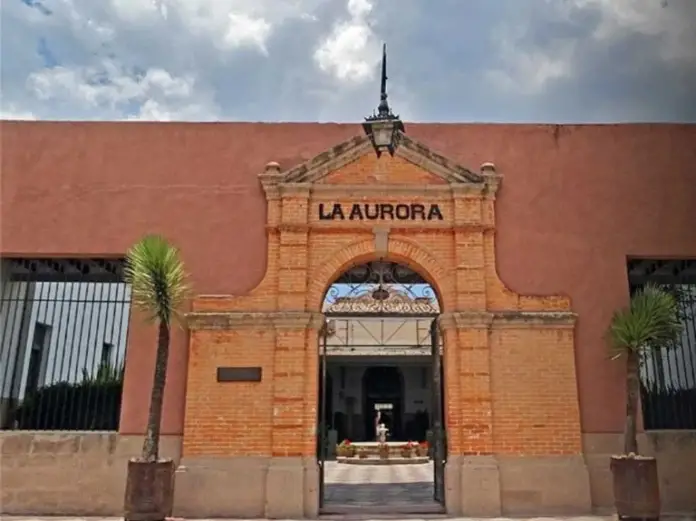San Miguel de Allende not only preserves mansions and temples; it also recycled an industrial colossus. The La Aurora Factory, which operated as a textile plant for almost nine decades, closed permanently on April 9, 1991, after a slow agony marked by the decline in cotton production and the end of its hydroelectric self-sufficiency. That same technical heart—turbines, pipelines, scars on the walls—left its mark, telling the story of a city that transitioned from manufacturing to art.
The leap from factory to cultural space came in 2004.
Under the leadership of the Garay family and creators such as Christopher Fallon, Mary Rapp, Merry Calderoni, and DeWayne Youts, the first workshops gave way to an ecosystem of galleries, studios, and design shops. La Aurora’s official narrative sums it up simply: “What was once a textile factory now houses canvases, sculptures, and artisanal products.” It is a respectful conversion: the industrial skin remains visible and is integrated into the experience.
Museum?
Rather, it’s an art and design center with a vibrant vocation: more than twenty galleries and studios in a single complex, where contemporary works by local and international artists are exhibited and sold. Among the names associated with the place are, in addition to the founders, authors such as Peter Leventhal, Juan Ezcurdia, Ricardo García, and Santiago Corral; the website and directory confirm this mix of residents and curatorial spaces. Historical museography coexists with the open workshop: sometimes the public watches the artists at work, sometimes they encounter antique machinery as a piece of memory.
The factory was founded at the beginning of the 20th century (the “Aurora” workers’ colony opened in 1903) and, for decades, transformed bales of cotton into yarn and blankets that were sold throughout the country. Its closure in 1991 condensed water problems and foreign competition; today, these same industrial facilities are visited for another type of production: symbolic. Local documentation offers the technical traces of the past—dams, pipes, turbines—that can still be explored among recovered courtyards and warehouses.
In addition to visiting galleries, a safe bet is the Art Walk: the artistic walk that, on the first Saturday of every month, features openings, music, and socializing between artists and visitors. It is the most festive aspect of a reconversion that has become a ritual in San Miguel.
Location, hours, and costs.
La Aurora is a 10–15-minute walk from the Main Garden. The official address is Calzada de la Aurora s/n, San Miguel de Allende, Guanajuato. It is open daily: Monday to Saturday from 10:00 a.m. to 6:00 p.m. and Sundays from 10:00 a.m. to 5:00 p.m. Admission is free; each gallery manages its own programming and sales. There are restaurants and cafés within the complex.
What to do today at La Aurora: Walk leisurely through the warehouses; enter the gallery-studios; chat with artists; See how industrial architecture interacts with painting, sculpture, glass, graphics, and designer furniture; round it off with coffee or lunch at the venue’s restaurants. The experience works for collectors, for those who are curious, and for those who simply want to see how a city rewrites its industrial past in a creative way.
Why it matters. The former La Aurora factory is an exemplary case of heritage recycling: it doesn’t gloss over industrial memory, it integrates it. It preserves scars, commemorates its former trades, and, at the same time, generates economic activity, cultural circulation, and a sense of place. This, in a World Heritage city, isn’t a whim: it’s a way of telling who we were, who we are, and what we can create from the remnants of an era.

Source: lasillarota




